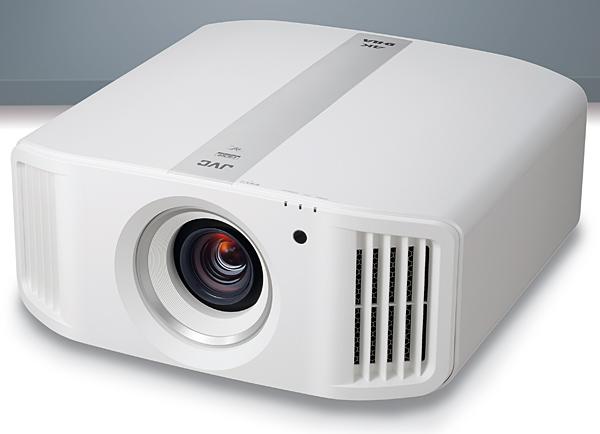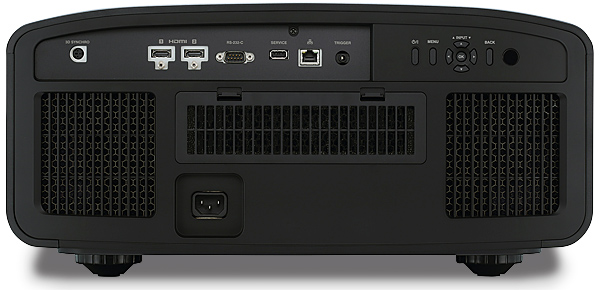JVC DLA-N5 4K HDR projector review

 JVC has gone native (4K) with its 'mainstream' D-ILA projectors. John Archer dims the lights and drools
JVC has gone native (4K) with its 'mainstream' D-ILA projectors. John Archer dims the lights and drools
JVC's D-ILA home cinema projectors have almost always been brilliant. What they haven't typically been up to recently, though, is natively 4K – and its first native 4K home cinema model was the £35,000 Z1 laser PJ, which I'm almost certain you didn't buy. More affordable models long relied on proprietary e-Shift technology to deliver a pseudo 4K effect by passing HD images through two fractionally offset 1080p imaging chips.
Now, however, JVC has gone the whole 4K hog. All of its new D-ILA models – even the entry-level DLA-N5 tested here – carry three native 4K D-ILA chips, finally putting them in the same home cinema sphere that Sony previously had to itself. And I'm pleased to say the difference this makes to the N5's image quality is instantly obvious.
Supplying the PJ with two of the most crisp and detailed 4K Blu-rays I know – Blade Runner 2049 and Passengers – finds an extra texture and raw detail versus even the best of JVC's e-Shift models. And with it comes more of a sense of depth and scale with expansive shots, such as the one across the junkyard after K crashes his spinner in Blade Runner 2049.

Close-ups with 4K content appear more organic, as genuine extra pixels of image information replace e-Shift's 'pixel repetition' approach. As a result, there's none of the slight plasticky look to skin tones, or processed feel to close-ups, that e-Shift sometimes caused. In fact, I could actually discern the makeup powder on Luv's face, during the extreme close-up as she controls the satellite-based weapon that saves K from his trash heap attackers – something I've never noticed before.
What's more, JVC has managed to introduce its new native 4K support without messing up other aspects of its long-respected projector picture quality. The high native resolution is joined by a native contrast ratio of 40,000:1. The DLA-N5 can give you deep, rich black levels accompanied by bold whites with none of the potential instability associated with projectors that dynamically adjust irises or lamp outputs to achieve strong contrast.
In fact, the N5 proves a far better handler of high dynamic range sources (in HDR10 or HLG formats) than any of its predecessors. Its HDR pictures are consistently brighter, avoiding a tendency to sometimes actually look duller than SDR, which is not what the format advertises. The N5's 1,800 Lumens of maximum brightness isn't huge, but it creates a satisfying sense of HDR peaks. Neon signs in the Ryan Gosling sci-fi have tangible pop.
Colours are almost always convincing in HDR too, largely avoiding a previous potential for tones to become too dark in dark scenes, or slightly bleached in bright ones.
The key to the N5's HDR improvements appears to be JVC's new intelligent tone mapping system. This works by taking the average and peak brightness metadata provided by 4K Blu-ray discs and using it to calculate the best way to display the images. You can argue that this functionality means you're not seeing a 'true' representation of HDR material. But HDR wasn't designed for PJs, and no consumer model can deliver a 'native' HDR experience successfully, so it's common sense for JVC to optimise performance. And the results, frankly, speak for themselves. You only have to toggle Auto Tone Mapping on and off to see what a difference it makes. A adjunct to this is the Mapping Level too, which can be used to essentially increase or decrease the picture's baseline brightness, and thus reduce or expand the image's dynamic range.

As mentioned in our IFA show report, JVC is promising a firmware update to its D-ILA models that will introduce a Frame Adapt HDR function, an evolution of Auto Tone Mapping where the PJ will adjust its presentation constantly based on analysis of each frame in an HDR source. This promises to make the N5's picture even more dynamic – hopefully without also making it look less stable.
Baby Brother
It's useful at this point to recap the other models in JVC's N range that will give you even more punch with 4K HDR content. The £8,500 N7 (reviewed in HCC #298) ups the brightness to 1,900 Lumens and doubles native/dynamic contrast to 80,000:1/800,000:1 respectively, while the THX-certified NX9 hits 2,200 Lumens; uses a 100mm glass lens rather than the N5's 65mm version lens; claims a native contrast ratio of 100,000:1; and, intriguingly, carries the projector world's first 8K e-Shift system. The NX9 also, though, costs a mammoth £18,000.
 |
Home Cinema Choice #351 is on sale now, featuring: Samsung S95D flagship OLED TV; Ascendo loudspeakers; Pioneer VSA-LX805 AV receiver; UST projector roundup; 2024’s summer movies; Conan 4K; and more
|























































